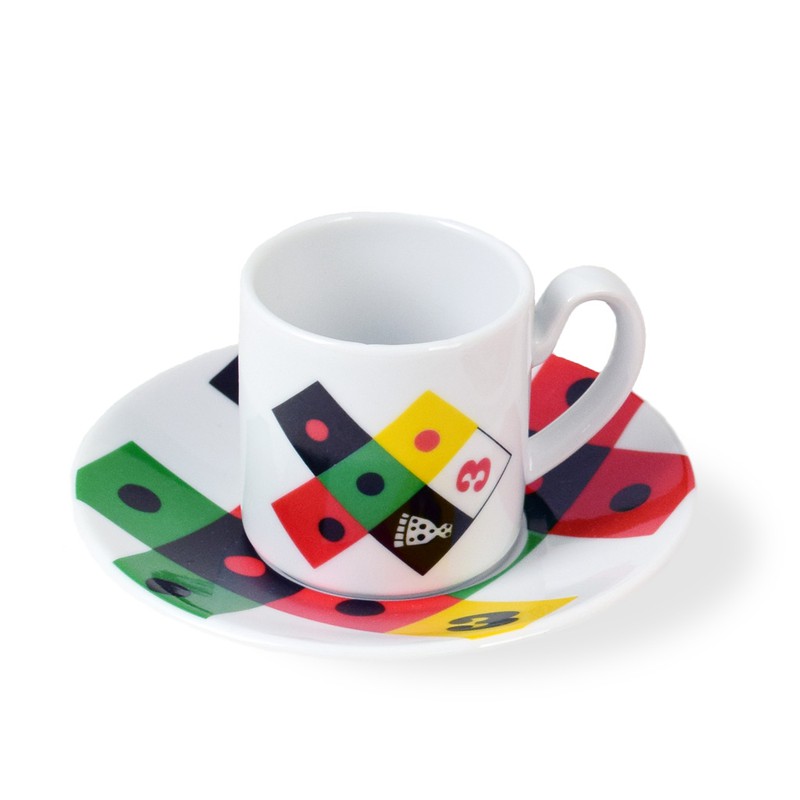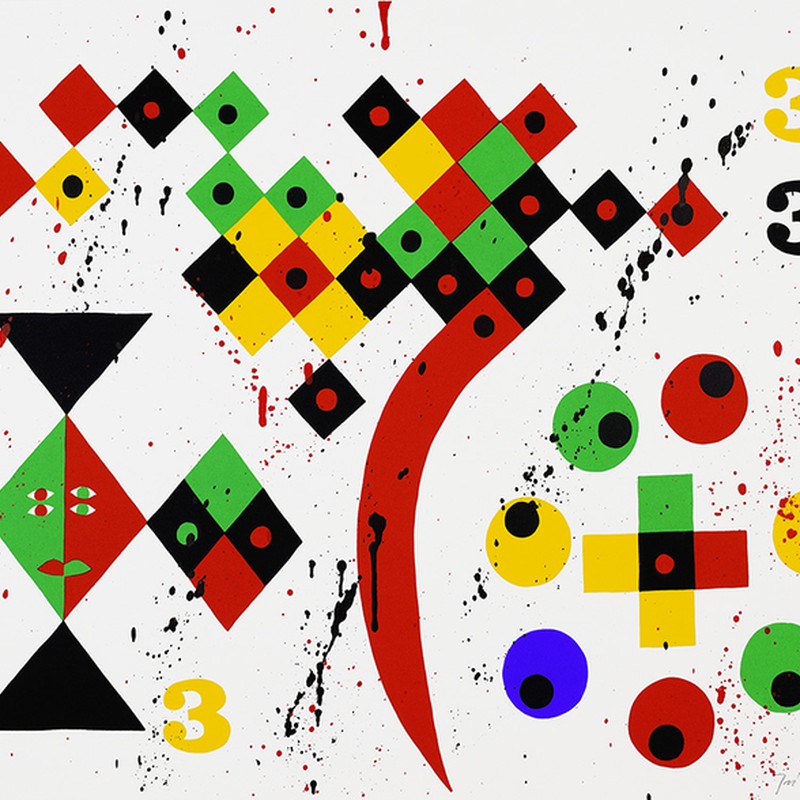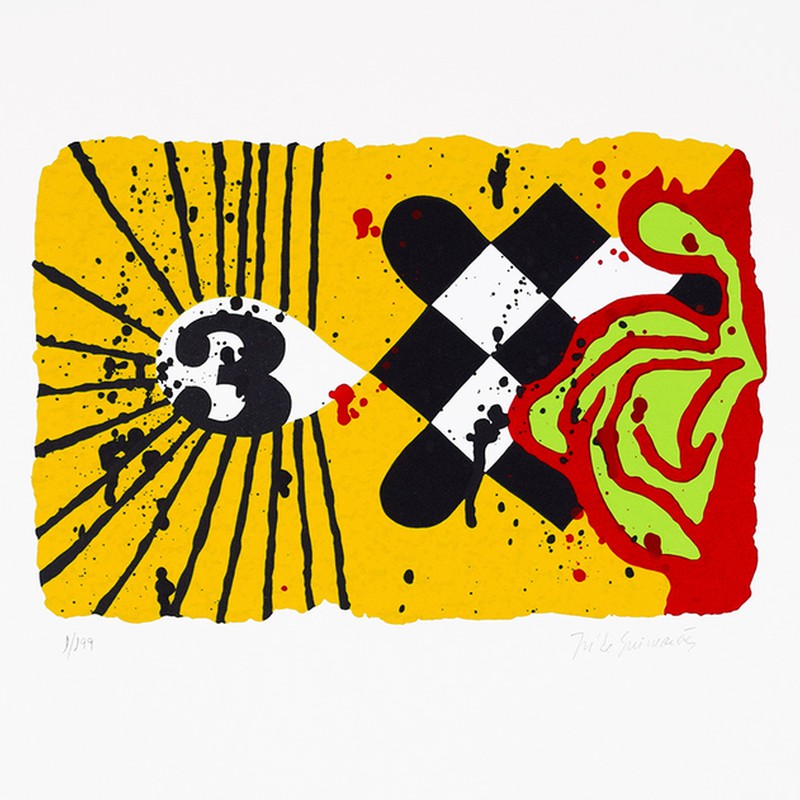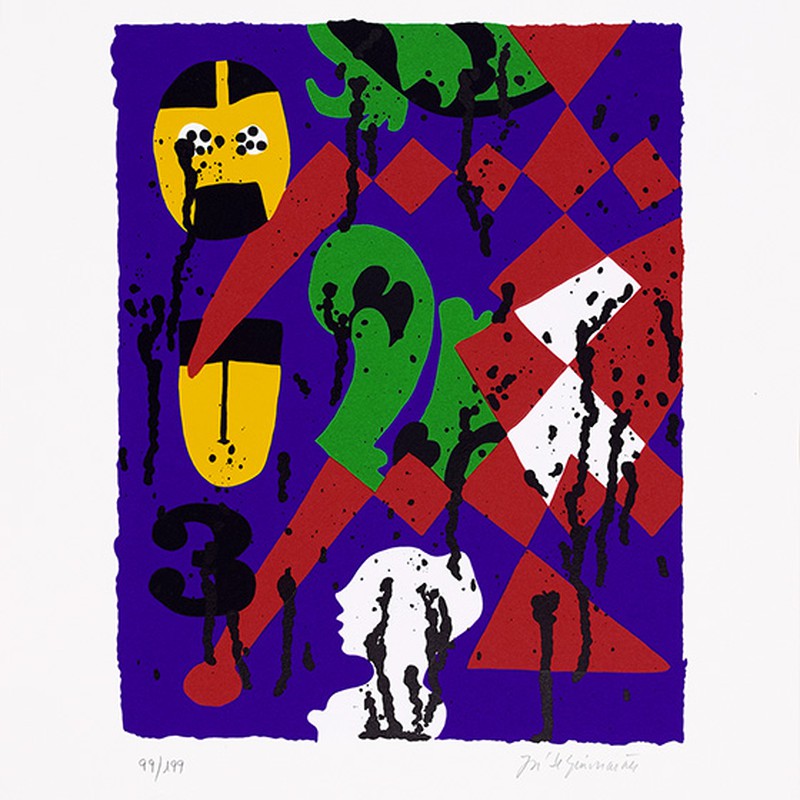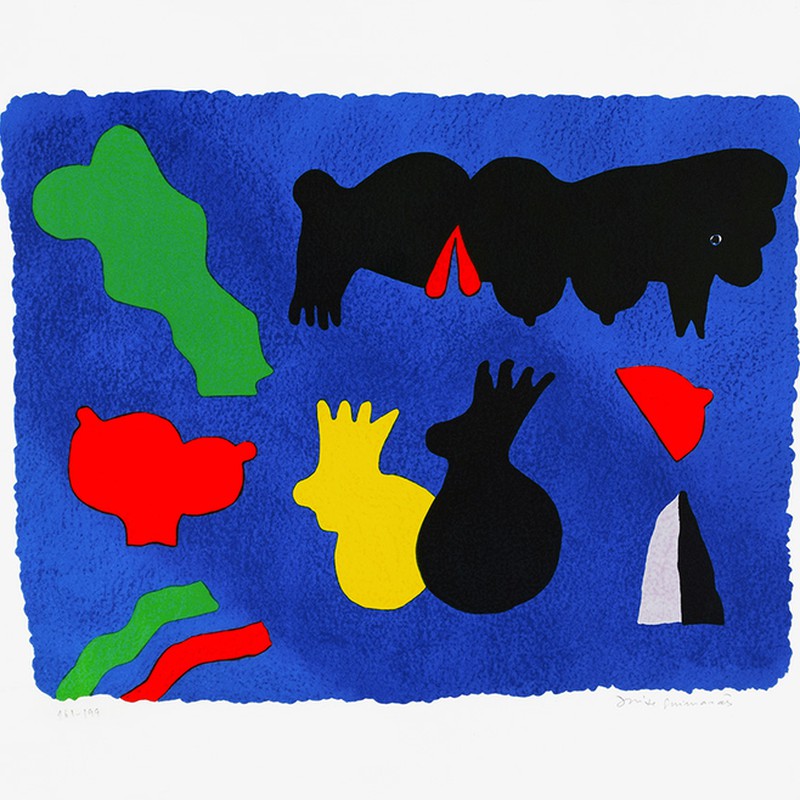
José de Guimarães
José Maria Fernandes Marques was born on November 25, 1939, in the city of Guimarães, where he lived until 1957. In 1958, already in Lisbon, he began his studies in the field of painting and drawing with Teresa de Sousa and Gil Teixeira Lopes. He attended the engraving courses at the Sociedade Cooperativa de Gravadores Portugueses where he met Hogan, Júlio Pomar, Almada Negreiros, and Bartolomeu Cid dos Santos, among others.
He left for Paris in 1961, when he came into contact with fauve painting, which would end up influencing him in the future. It was in this year that he adopted the pseudonym José de Guimarães, in homage to his homeland. The following year he travelled to Italy, where he had the opportunity to see Michelangelo's frescoes and paintings by Morandi and Giorgio de Chirico.
After another year in Paris, he visited Munich and found Klee, Kandinsky, the Bauhaus and Die Bruecke.
In 1967, in Africa, he joined a military service commission in Angola. There, he became interested in African art and began his foray into the world of collage. Still in Luanda, he published the Manifesto to non-conformist painters-Arte Disturbadora-where he stated “Get closer to life and use the materials of our time. Give beauty to steel, aluminium, concrete and plastic.”
He returned to Portugal in 1974 and in 1980 he started sculpting. In these journeys and influences of 20th-century art lies the core of the art of José de Guimarães, who always continued the search for new artistic realities. In this context, he also made trips to Japan, China, Mexico and Tunisia. From all of them, he gathered important data and perspectives that permeate his works.
In 2001 he received the Career Consecration Award, awarded by the Portuguese Society of Authors and, in 2009, the Grand Cross of the Order of Merit.
His work is represented in important collections, namely:
Wurth Museum, Kunzelsan; Museum of Angola, Luanda; Royal Museum of Modern Art, Brussels; Museum of Modern Art (MUHKA), Antwerp; Middelheim Museum, Antwerp; Verenneman Foundation, Kruishoutem; Belgian State Collection, Brussels; Museum of Modern Art (MASP), São Paulo. Museum of Contemporary Art (MAC), University of São Paulo. Museum of Contemporary Art (MAM), Rio de Janeiro. National Museum of Fine Arts, Rio de Janeiro. Carlton University, Ottawa. French State Collection, National Fund for Contemporary Art, Paris; European Parliament, Strasbourg; Akemi Foundation, Osaka; Tachikawa City, Tokyo. Olympic Park, Seoul; Calouste Gulbenkian Foundation, Lisbon; National Museum of Modern Art, Casa de Serralves, Porto; Portuguese State Collection, Lisbon; Soares dos Reis National Museum, Center for Contemporary Art, Porto; National Library of Lisbon, Lisbon; Alberto Sampaio Museum, Guimarães; Martins Sarmento Museum, Guimarães; Belém Cultural Centre, Lisbon; Spanish Museum of Contemporary Art, Madrid; Ministry of Culture, Madrid; National Engraving Museum, Madrid; National Library, Bern; Frederick Weisseman Foundation, Los Angeles; Rockefeller Art Center (SUNY) Fredonia, New York.

